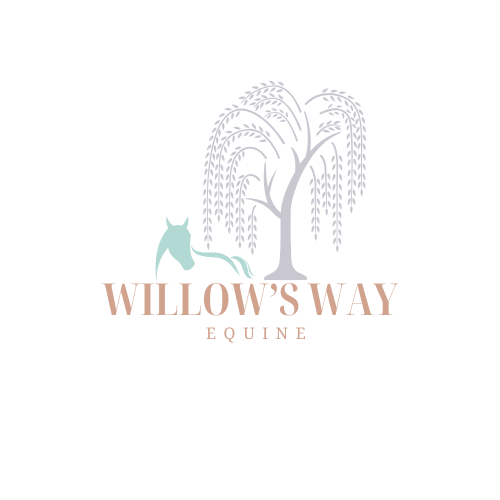
When your horse struggles with anxiety, aggression, or confusing behaviors, it can feel overwhelming. You want to help, but it’s not always clear what your horse is trying to tell you. That’s where we come in.
As an Equine Behavior Specialist (B.S. in Equine Studies, Certified in Equine Psychology, IAABC member), I work with you to learn the meaning behind your horse’s behavior and create a plan to move forward.
What a consultation looks like.
Every consultation is tailored to your horse, but includes:
A conversation with you about your horse’s history, environment, routines, and any concerns.
Observation of your horse’s body language, environment, and interactions.
Hands-on interaction through groundwork — and under saddle if needed — to understand behavior in context.
Personalized strategies you can use right away, focused on positive reinforcement, nervous system regulation, and owner education.
You’ll also receive a custom 30-day plan after your session. This plan outlines the exact steps to keep your progress moving forward — including simple exercises, training adjustments, and routines that align with what your horse learned during the consultation. We’ll be in touch, so if we need to make adjustments, we can!
Behavior change takes consistency, and your role as the owner is the most important part. These sessions are designed to be hands-on and educational, giving you the tools and confidence to continue the work long after I leave. If your horse needs continued support or a follow-up session, we’ll schedule that together — you’re never left to figure it out alone.
Behaviors I commonly help with:
Anxiety & Fear
Spookiness, herd-bound behavior, general anxiety, fear of farrier work, needles, trailer loading, clippers, or fly spray.
Aggression
Biting, kicking, striking, resource guarding (food, water, space), and aggression toward people or other horses. Aggressive horses will likely begin the process in protected contact.
Under Saddle
Bucking, rearing, bolting, jump refusal, “scary end” of the arena, dull or unresponsive to cues, laying down under saddle.
Handling & Management
Bolting in hand, poor ground manners, pulling back when tied, stall kicking, aggression or irritation during grooming, tacking, or routine care.
Unusual or Repetitive Behaviors
Self-mutilation, depression/unresponsiveness, and stereotypies such as cribbing. pacing, stall walking, or weaving.
If there is training that extends beyond what I’m comfortable with on my own, I will work with you to find a suitable trainer who can come in and help. We won’t give up as long as you won’t!
How we modify behavior
Positive Reinforcement (r+)
One of the most effective ways to change behavior is through positive reinforcement, or r+ training. At its core, this method rewards the behaviors we want to see more of, instead of punishing the ones we don’t. Horses quickly learn that their choices matter, and they become more engaged and willing to participate.
The science is simple: behaviors followed by pleasant outcomes are more likely to be repeated. By reinforcing calm, safe, and cooperative behavior, we make those behaviors the horse’s default choice.
Pressure and Release Without Escalation
While r+ is central to my work, I also use traditional pressure-and-release — with pressure that stays the same. That means I apply light cues and release immediately when the horse responds, instead of increasing pressure until the horse gives in. Pressure remains steady. This keeps the communication clear and fair.
Why Low-Value Treats?
I use low-value food rewards (such as hay pellets) for a reason. High-value treats like carrots or cookies can create over-excitement or frustration if the horse doesn’t get them quickly enough. Low-value rewards keep sessions calm and focused while still motivating the horse to participate. The goal isn’t to bribe the horse (but I don’t really mind calling it that), it’s to help them associate good choices with positive outcomes.
Send us an email by clicking on the button below, and we’ll send you an intake form and a price list to that same email address to get started!
My Approach
My work is grounded in the belief that every horse deserves a voice. Behavior is communication, not defiance. By listening carefully, adjusting the environment, and teaching through positive reinforcement, we give your horse the chance to feel safe, understood, and willing to participate.
This process isn’t about quick fixes. It’s about building lasting trust and creating a partnership where both horse and human feel more at ease.
Important Notes
All horses must be cleared by a veterinarian for pain before a behavior consultation. If pain is suspected, I may recommend further diagnostics or referral to professionals such as a saddle fitter, farrier, chiropractor, or bodyworker. We will often recommend changes in lifestyle, environment, or schedule.
Don’t panic! We can work on this with you.
About Your Instructor
-
Morrisville State University - 2003
Post University 2023
-
Centre of Excellence - 150 hour certification
-
Currently putting in hours for Equine Behaviorist Certification for the International Association of Animal Behavior Consultants.
-
2.5-hour certification led by Debbi Bell + over 50 hours of hands-on experience.
-
2 hour certification - Taught by Celine Homan
-
Yoga Renew




